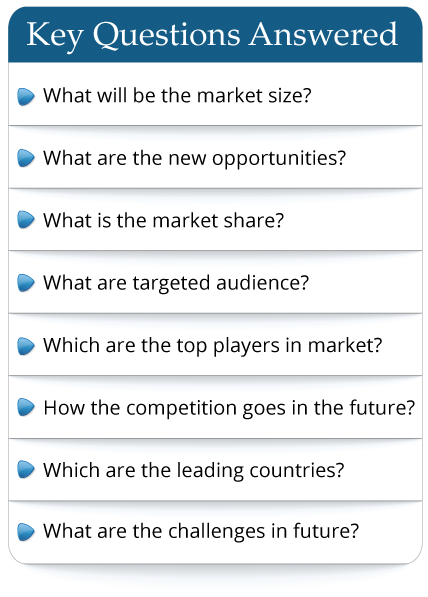Global Vertical Axis Wind Turbine Market Professional Survey by Types, Applications, and Players, with Regional Growth Rate Analysis and Development Situation, from 2023 to 2028
According to the latest research, the global Vertical Axis Wind Turbine market size was valued at USD 15904.96 million in 2022 and is expected to expand at a CAGR of 4.54% during the forecast period, reaching USD 20765.76 million by 2028.
Vertical-axis wind turbines (VAWT) is a type of wind turbine where the main rotor shaft is set transverse to the wind (but not necessarily vertically) while the main components are located at the base of the turbine.Vertical Axis Wind Turbines are designed to be economical and practical, as well as quiet and efficient. They are great for use in residential areas whereas the HAWT is best for use at a business location. There are two different styles of vertical wind turbines out there. One is the Savonius rotor, and the second is the Darrieus model.
This report elaborates on the market size, market characteristics, and market growth of the Vertical Axis Wind Turbine industry between the year 2018 to 2028, and breaks down according to the product type, downstream application, and consumption area of Vertical Axis Wind Turbine. The report also introduces players in the industry from the perspective of the value chain and looks into the leading companies.
Key Points this Global Vertical Axis Wind Turbine Market Report Include:
Market Size Estimates: Vertical Axis Wind Turbine market size estimation in terms of revenue and sales from 2018-2028
Market Dynamic and Trends: Vertical Axis Wind Turbine market drivers, restraints, opportunities, and challenges
Macro-economy and Regional Conflict: Influence of global inflation and Russia & Ukraine War on the Vertical Axis Wind Turbine market
Segment Market Analysis: Vertical Axis Wind Turbine market revenue and sales by type and by application from 2018-2028
Regional Market Analysis: Vertical Axis Wind Turbine market situations and prospects in major and top regions and countries
Vertical Axis Wind Turbine Market
Vertical Axis Wind Turbine Industry Chain: Vertical Axis Wind Turbine market raw materials & suppliers, manufacturing process, distributors by region, downstream customers
Vertical Axis Wind Turbine Industry News, Policies by regions
Vertical Axis Wind Turbine Industry Porters Five Forces Analysis
Key players in the global Vertical Axis Wind Turbine market are covered in Chapter 2:
Windspire Energy
Bergey Windpower Co. Inc.
Eastern Wind Power, Inc.
Sea Twirl
Ropatec
Aeolos Wind Energy Ltd
Helix Wind
Kliux Energies
Astralux Ltd, ArborWind
Wind Harvest International
In Chapter 6 and Chapter 9, on the basis of types, the Vertical Axis Wind Turbine market from 2018 to 2028 is primarily split into:
Savonius Model
Darrieus Model
Giromill Model
In Chapter 7 and Chapter 10, on the basis of applications, the Vertical Axis Wind Turbine market from 2018 to 2028 covers:
Commercial
Agriculture
Residential
Industrial
Others
Geographically, the detailed analysis of consumption, revenue, market share and growth rate of the following regions from 2018 to 2028 are covered in Chapter 8 and Chapter 11:
United States
Europe
China
Japan
India
Southeast Asia
Latin America
Middle East and Africa
Others
In summary, this report relies on sources from both primary and secondary, combines comprehensive quantitative analysis with detailed qualitative analysis, and pictures the market from a macro overview to micro granular segment aspects. Whatever your role in this industry value chain is, you should benefit from this report with no doubt.
Chapter Outline
This report consists of 12 chapters. Below is a brief guideline to help you quickly grasp the main contents of each chapter:
Chapter 1 first introduces the product overview, market scope, product classification, application, and regional division, and then summarizes the global Vertical Axis Wind Turbine market size in terms of revenue, sales volume, and average price.
Chapter 2 analyzes the main companies in the Vertical Axis Wind Turbine industry, including their main businesses, products/services, sales, prices, revenue, gross profit margin, and the latest developments/updates.
Chapter 3 is an analysis of the competitive environment of Vertical Axis Wind Turbine market participants. This mainly includes the revenue, sales, market share, and average price of the top players, along with the market concentration ratio in 2022 and the players' M&A and expansion in recent years.
Chapter 4 is an analysis of the Vertical Axis Wind Turbine industrial chain, including raw material analysis, manufacturing cost structure, distributors, and major downstream buyers.
Chapter 5 focuses on Vertical Axis Wind Turbine market dynamics and marketing strategy analysis, which include opportunities, challenges, industry development trends under inflation, industry news and policies analyzed by region, Porter's Five Forces analysis, as well as direct and indirect marketing, and the development trends of marketing channels.
Chapters 6-8 have segmented the Vertical Axis Wind Turbine market by type, application, and region, with a focus on sales and value from 2018 to 2023 from both vertical and horizontal perspectives.
Chapters 9-11 provide detailed Vertical Axis Wind Turbine market forecast data for 2023-2028, broken down by type and application, region, and major countries to help understand future growth trends.
Chapter 12 concludes with an explanation of the data sources and research methods. Verify and analyze through preliminary research to obtain final quantitative and qualitative data.
2022
Vertical-axis wind turbines (VAWT) is a type of wind turbine where the main rotor shaft is set transverse to the wind (but not necessarily vertically) while the main components are located at the base of the turbine.Vertical Axis Wind Turbines are designed to be economical and practical, as well as quiet and efficient. They are great for use in residential areas whereas the HAWT is best for use at a business location. There are two different styles of vertical wind turbines out there. One is the Savonius rotor, and the second is the Darrieus model.
This report elaborates on the market size, market characteristics, and market growth of the Vertical Axis Wind Turbine industry between the year 2018 to 2028, and breaks down according to the product type, downstream application, and consumption area of Vertical Axis Wind Turbine. The report also introduces players in the industry from the perspective of the value chain and looks into the leading companies.
Key Points this Global Vertical Axis Wind Turbine Market Report Include:
Market Size Estimates: Vertical Axis Wind Turbine market size estimation in terms of revenue and sales from 2018-2028
Market Dynamic and Trends: Vertical Axis Wind Turbine market drivers, restraints, opportunities, and challenges
Macro-economy and Regional Conflict: Influence of global inflation and Russia & Ukraine War on the Vertical Axis Wind Turbine market
Segment Market Analysis: Vertical Axis Wind Turbine market revenue and sales by type and by application from 2018-2028
Regional Market Analysis: Vertical Axis Wind Turbine market situations and prospects in major and top regions and countries
Vertical Axis Wind Turbine Market
Competitive Landscape
and Major Players: Analysis of 10-15 leading market players, sales, price, revenue, gross, gross margin, product/service profile and recent development/updates, etc.Vertical Axis Wind Turbine Industry Chain: Vertical Axis Wind Turbine market raw materials & suppliers, manufacturing process, distributors by region, downstream customers
Vertical Axis Wind Turbine Industry News, Policies by regions
Vertical Axis Wind Turbine Industry Porters Five Forces Analysis
Key players in the global Vertical Axis Wind Turbine market are covered in Chapter 2:
Windspire Energy
Bergey Windpower Co. Inc.
Eastern Wind Power, Inc.
Sea Twirl
Ropatec
Aeolos Wind Energy Ltd
Helix Wind
Kliux Energies
Astralux Ltd, ArborWind
Wind Harvest International
In Chapter 6 and Chapter 9, on the basis of types, the Vertical Axis Wind Turbine market from 2018 to 2028 is primarily split into:
Savonius Model
Darrieus Model
Giromill Model
In Chapter 7 and Chapter 10, on the basis of applications, the Vertical Axis Wind Turbine market from 2018 to 2028 covers:
Commercial
Agriculture
Residential
Industrial
Others
Geographically, the detailed analysis of consumption, revenue, market share and growth rate of the following regions from 2018 to 2028 are covered in Chapter 8 and Chapter 11:
United States
Europe
China
Japan
India
Southeast Asia
Latin America
Middle East and Africa
Others
In summary, this report relies on sources from both primary and secondary, combines comprehensive quantitative analysis with detailed qualitative analysis, and pictures the market from a macro overview to micro granular segment aspects. Whatever your role in this industry value chain is, you should benefit from this report with no doubt.
Chapter Outline
This report consists of 12 chapters. Below is a brief guideline to help you quickly grasp the main contents of each chapter:
Chapter 1 first introduces the product overview, market scope, product classification, application, and regional division, and then summarizes the global Vertical Axis Wind Turbine market size in terms of revenue, sales volume, and average price.
Chapter 2 analyzes the main companies in the Vertical Axis Wind Turbine industry, including their main businesses, products/services, sales, prices, revenue, gross profit margin, and the latest developments/updates.
Chapter 3 is an analysis of the competitive environment of Vertical Axis Wind Turbine market participants. This mainly includes the revenue, sales, market share, and average price of the top players, along with the market concentration ratio in 2022 and the players' M&A and expansion in recent years.
Chapter 4 is an analysis of the Vertical Axis Wind Turbine industrial chain, including raw material analysis, manufacturing cost structure, distributors, and major downstream buyers.
Chapter 5 focuses on Vertical Axis Wind Turbine market dynamics and marketing strategy analysis, which include opportunities, challenges, industry development trends under inflation, industry news and policies analyzed by region, Porter's Five Forces analysis, as well as direct and indirect marketing, and the development trends of marketing channels.
Chapters 6-8 have segmented the Vertical Axis Wind Turbine market by type, application, and region, with a focus on sales and value from 2018 to 2023 from both vertical and horizontal perspectives.
Chapters 9-11 provide detailed Vertical Axis Wind Turbine market forecast data for 2023-2028, broken down by type and application, region, and major countries to help understand future growth trends.
Chapter 12 concludes with an explanation of the data sources and research methods. Verify and analyze through preliminary research to obtain final quantitative and qualitative data.
Years considered for this report:
Historical Years:
2018-2022Base Year:
2022Estimated Year:
2023Forecast Period:
2023-2028Frequently Asked Questions
This market study covers the global and regional market with an in-depth analysis of the overall growth prospects in the market. Furthermore, it sheds light on the comprehensive competitive landscape of the global market. The report further offers a dashboard overview of leading companies encompassing their successful marketing strategies, market contribution, recent developments in both historic and present contexts.
- By product type
- By End User/Applications
- By Technology
- By Region
The report provides a detailed evaluation of the market by highlighting information on different aspects which include drivers, restraints, opportunities, and threats. This information can help stakeholders to make appropriate decisions before investing.
Please Select a Format












